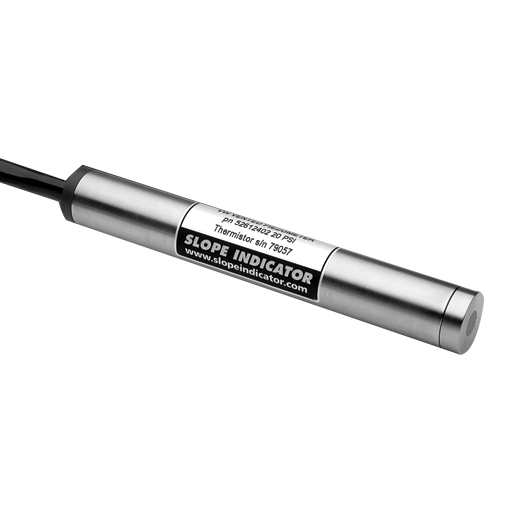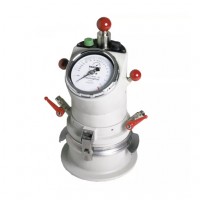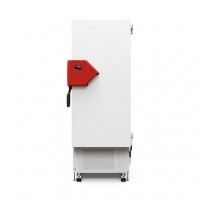| APPLICATIONS | |||
| |||
| OPERATION | |||
| The VW pressure transducer converts water pressure to a frequency signal via a patented* arrangement of diaphragm, a tensioned steel wire, and an electromagnetic coil. The pressure transducer is designed so that a change in pressure on the diaphragm causes a change in tension of the wire. An electromagnetic coil is used to excite the wire, which then vibrates at its natural frequency. The vibration of the wire in the proximity of the coil generates a frequency signal that is transmitted to the readout device. The readout or data logger stores the reading in Hz. Calibration factors are then applied to the reading to arrive at a pressure in engineering units. | |||
| ADVANTAGES | |||
| Designed for Low Pressure | |||
| The vented pressure transducer has a range of 0 to 1.5 bar (22 psi). | |||
| Large Diameter Vent Tube | |||
| The large diameter vent tube provides quick response to changes in atmospheric pressure and cannot be blocked by condensation. | |||
| Oversize Desiccant Chamber | |||
| The large capacity, low maintenance desiccant chamber keeps vent tube dry for 3 to 6 months. | |||
| SPECIFICATIONS | |
| Sensor Type | Pluck-type vibrating wire sensor with built-in thermistor or RTD |
| Range | 1.5 bar (22 psi) |
| Resolution | 0.025%FS, equivalent to 0.00038 bar or 0.0055 psi |
| Calibration Accuracy | ±0.1% FS |
| Maximum Pressure | 3 x rated range |
| Filter | 50-micron sintered stainless steel |
| Calibration | Eleven-point calibration |
| Temperature Coefficient | < 0.02% FS per °C) |
| Materials | Stainless steel |
| Dimensions | 29 x 191 mm (1.125 x 7.5") |
| Weight | 0.45 kg (1 lb) |
| CAT. NO. | DESCRIPTION |
| SI52612402 | Vented VW Pressure Transducer |



Do you have a question?
min 10 ch